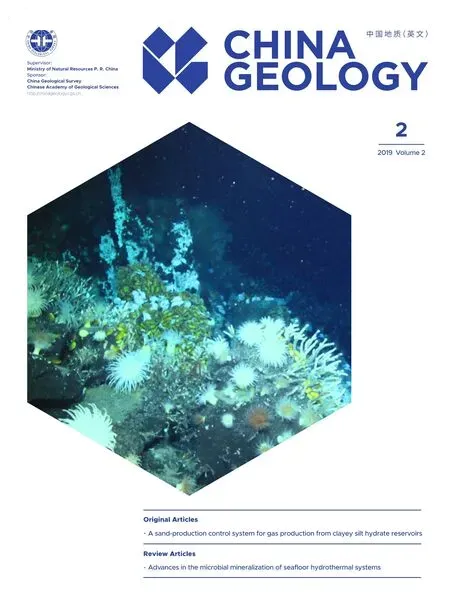Multiphase porphyry intrusions in the Sungun copper deposit, NW Iran: Evidence from SHRIMP zircon U-Pb dating
Hong-rui Zhng, Zeng-qin Hou, Tin-nn Yng, Zhi-ming Yng, Jin-lin Chen , Mehrj Aghzeh
a Key Laboratory of Deep-Earth Dynamics of Ministry of Natural Resources, Institute of Geology, Chinese Academy of Geological Sciences, China Geological Survey, Ministry of Natural Resources, Beijing 100037, China
b State Key Laboratory of Isotope Geochemistry, Guangzhou Institute of Geochemistry, Chinese Academy of Sciences, Guangzhou 510640, China
c Chinese Academy of Sciences Center for Excellence in Tibetan Plateau Earth Sciences, Beijing 100101, China
d Department of Geology, Payame Noor University, Tehran 19395-4697, Iran
1. Objectives
The porphyry copper deposits (PCD) are usually hosted in a multistage intrusive complex but only causallyrelated tospecific magma of high oxidation state and water content.The copper enrichment of the porphyry system is caused by accumulation during magmatic differentiation (Hou ZQ et al.,2015). Thus, study on magmatic evolution and Cu mineralization process is important for understanding the formation of PCD.
The Sungun deposit in NW Iran, contains 850 Mt of ore reserves at an average grade of 0.62% Cu and 0.01% Mo, is one of the largest PCD in the Tethyan Orogen (Fig. 1a; Hou ZQ and Zhang HR, 2015). Numerous studies revealed that both ore-bearing porphyry and Cu mineralization were formed at ca. 21 Ma (Hou ZQ and Zhang HR, 2015). However, the whole magmatic sequences are poorly constrained, which obstructed the understanding ofmagmatic evolution and mineralization of the Sungun deposit.
2. Methods
Detailed field mappinghad identified the main rock types of the Sungun deposit, including Cretaceous limestone,Oligocene monzonite and quartz monzonite, Miocene Sungun stock, and overlying and esite lava. The Sungun stock consists of three successive intrusions: (1) granodioritic porphyry with intense mineralization, (2) biotite dioritic dyke with minor mineralization, and (3) barren andesitic dyke. To determine the exact emplacement age of the three intrusions, we collect three samples for separating zircons for U-Pb dating. The GPS locations are 38°42′09″ N, 46°42′22″ E for granodioritic porphyry (sample No. I13-99), 38°39′57″ N, 46°40′40″ E for biotite dioritic dyke (sample No. I13-124), and 38°39′30″ N,46°40′18 ″ E for andesitic dyke (sample No. I13-126),respectively. Zircon grains were separated using conventional heavy liquid and magnetic separation techniques. U-Pb dating was performed using the SHRIMP II instrument at the Beijing SHRIMP Center, Chinese Academy of Geological Sciences(CAGS), Beijing, China.
3. Results
Zircons from granodioritic porphyry are long prismatic crystals with clear oscillatory zoning during CL imaging. All of the 19 analyses yielded a weighted mean206Pb/238U age of 21.39 ± 0.16 Ma (MSWD = 0.86; Fig. 1b, Table 1). Zircons from biotite dioritic dyke have subhedral stubby prisms that show well-developed oscillatory zoning during CL imaging.The 5 concordant analyses yielded a tight cluster with a weighted mean206Pb/238U age of 20.39±0.33 Ma (MSWD =0.75; Fig. 1c, Table 2). Zircons from andesitic dyke are stubby to elongate prisms. The 18 concordant analyses clustered tightly to yield a weighted mean206Pb/238U age of 19.34±0.32 Ma (MSWD = 1.6; Fig. 1d, Table 3).

Fig. 1. a- Geological map of the Sungun deposit, NW Iran (modified from Hezarkhani A, 2006); b-d-U-Pb concordia diagrams and representative CL images of zircons for granodioritic porphyry, biotite dioritic dyke, and andesitic dyke from the Sungun deposit, respectively.

Table 1. U-Pb data for zircons from granodioritic porphyry in the Sungun deposit.

Table 2. U-Pb data for zircons from biotite dioritic dyke in the Sungun deposit.

Table 3. U-Pb data for zircons from andesitic dyke in the Sungun deposit.
4. Conclusions
(i) Multiphase intrusions of the Sungun stock emplaced at 21.39 ± 0.16 Ma, 20.39 ± 0.33 Ma, and 19.34 ± 0.32 Ma,respectively.
(ii) The ore causative porphyry crystallized earlier than other intrusions in the Sungun deposit.
Acknowledgement
This study was financially supported by the Second Tibetan Plateau Scientific Expedition and Research(2019QZKK0801), the National Natural Science Foundation of China (NSFC programs 41772088, 41773042 and 41773043) and the Geological Survey Project (DD20190001).
- China Geology的其它文章
- The Key Laboratory of Coastal Wetland Biogeosciences
- Introduction to Key Laboratory of Gas Hydrate, Ministry of Natural Resources
- The Report of China Mineral Resource Reserves, 2018
- The Report of China Mineral Resource Exploration, 2018
- First report of TSR origin minerals filled in anhydrite dissolved pores in southeastern Ordos Basin
- Discovery of Late Cretaceous-Paleocene faulted basins developed on the Yandang Low Uplift, East China Sea Shelf Basin

